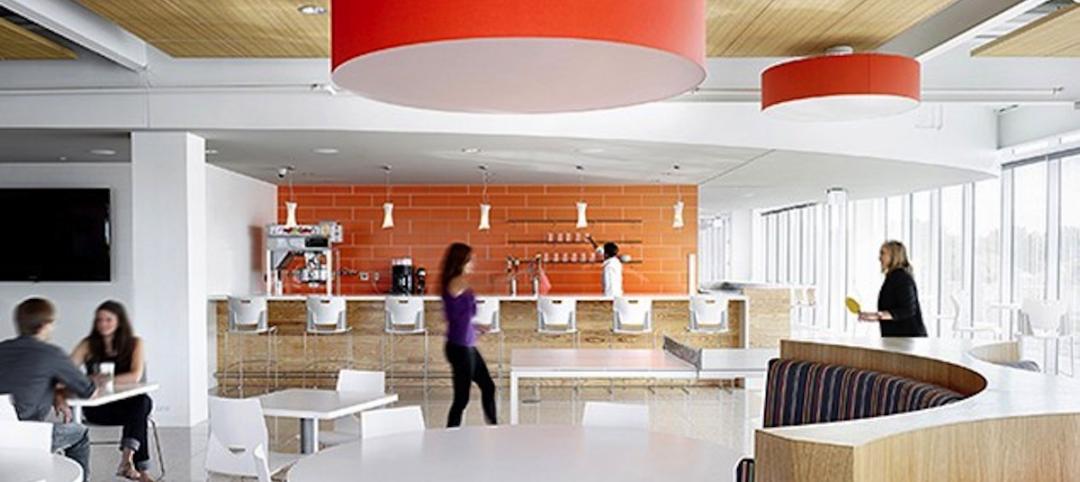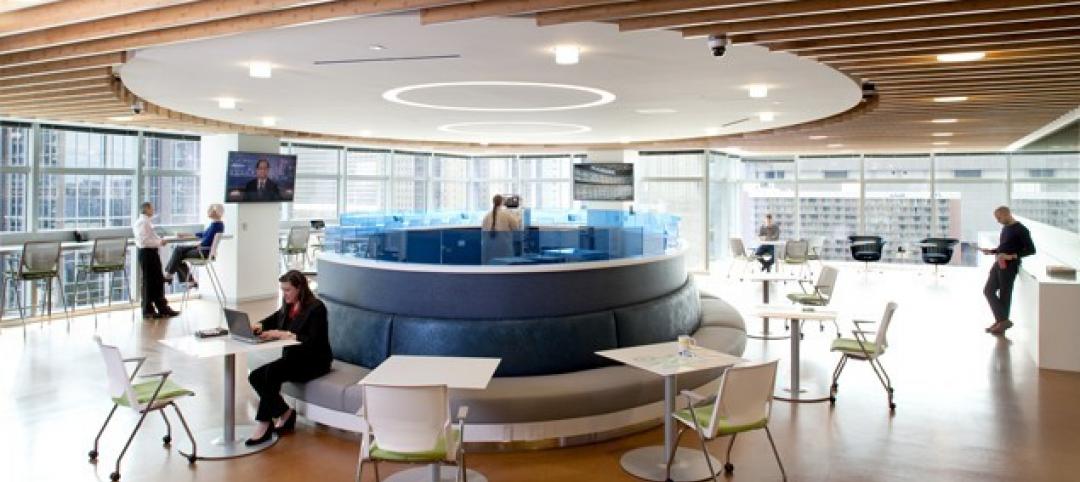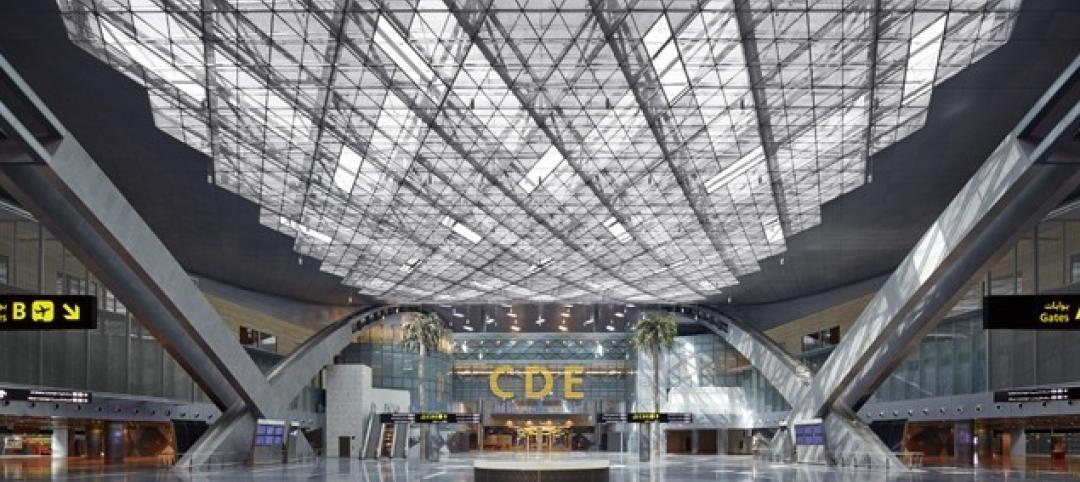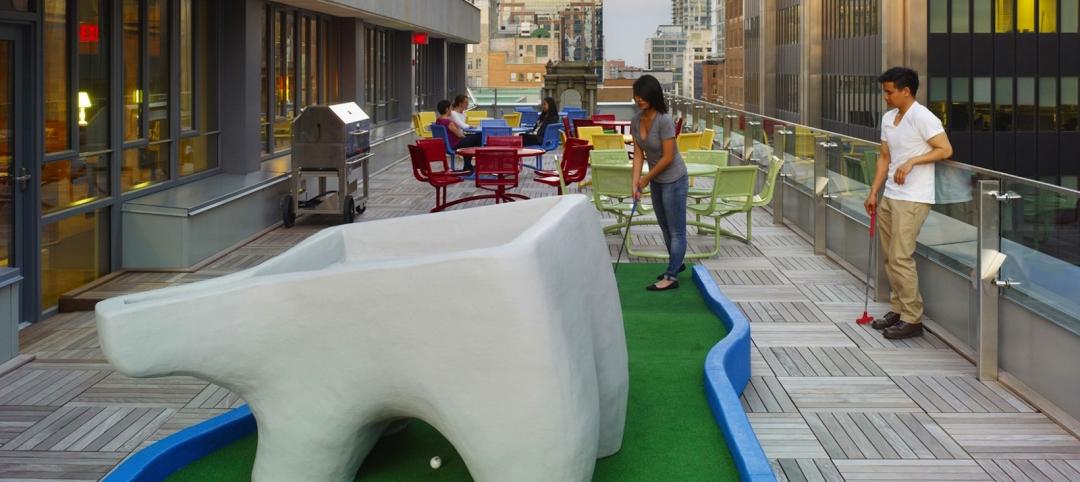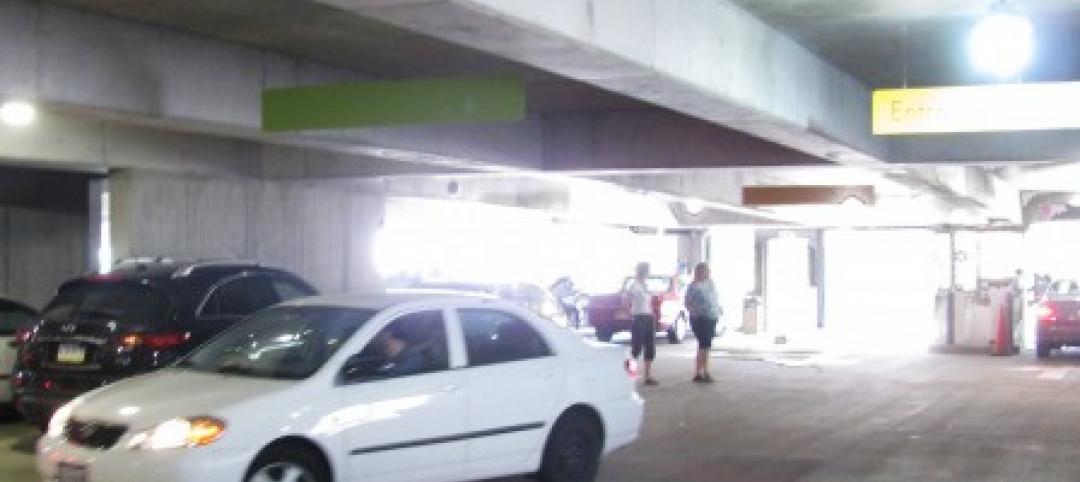Just about every conversation I have related to employee attraction and retention tends to turn into an HR sounding discussion about office protocols, incentives, and perks. And there are many great articles on this topic. This recent article by Josh Bersin is a great example of some economic factors and organizational approaches to retaining the best people. But as a workplace strategist, I need to help my clients make more tangible links between their physical workplace and how it can be leveraged to attract and retain top talent. Below I offer up a few thoughts.
First Impressions
Most people would guess that the first impression of your workplace begins in the reception/lobby area. In reality, the first physical impression someone has of your workplace starts out on the curb. To the extent that you have control over the situation, be sure to consider the visitor experience starting with the outside of the building.
If you own the building, you obviously have leverage to fine tune this experience through signage, landscaping, a clean, modern building lobby, etc. But if you are like the majority of companies, you are leasing your space and will have less control over the exterior experience. In those cases, it is important to at least consider the following physical elements (and in some cases look for potential negotiating power with your landlord):
Parking
- Is there enough?
- Is it easy to navigate (good signage, way finding)?
- Is parking validated for visitors?
- Can parking spaces be reserved for visitors and current employees?
- Is it safe and well-maintained?
Building Lobby
- Does the building lobby have adequate seating?
- Is there somewhere visitors need to check in, get a visitor badge, etc.? Is this space obvious to visitors?
- Is there any other special security clearance a visitor or employee needs to go through (turnstiles, badge elevator access, etc.)?
- Are the interior finishes (materials, lighting, furniture) clean, modern, well maintained?
Read the full post at Life at HOK
 About the Author: Mike McKeown is a senior workplace strategist with HOK Strategic Accounts + Consulting group. Based in Dallas, Mike specializes in workplace strategy including: facility programming, trends and benchmarking, space utilization, workplace anthropology and change management. Mike regularly consults with client's facilities and corporate real estate teams to provide solutions that align business goals and workplace strategy. Originally from Philadelphia, Mike attended Carnegie Mellon University where he studied Industrial Design. He is currently earning his MBA at Southern Methodist University's Cox School of Business. Prior to Dallas, Mike lived in Chicago for a number of years, working as an Interior Designer and Workplace Consultant. Read more posts by Mike McKeown.
About the Author: Mike McKeown is a senior workplace strategist with HOK Strategic Accounts + Consulting group. Based in Dallas, Mike specializes in workplace strategy including: facility programming, trends and benchmarking, space utilization, workplace anthropology and change management. Mike regularly consults with client's facilities and corporate real estate teams to provide solutions that align business goals and workplace strategy. Originally from Philadelphia, Mike attended Carnegie Mellon University where he studied Industrial Design. He is currently earning his MBA at Southern Methodist University's Cox School of Business. Prior to Dallas, Mike lived in Chicago for a number of years, working as an Interior Designer and Workplace Consultant. Read more posts by Mike McKeown.
More from Author
Life at HOK | Apr 21, 2015
How to create an 'emotionally intelligent' workplace
Emotional intelligence is the leading predictor of performance in the workplace and the strongest driver of leadership and personal excellence.
Life at HOK | Feb 6, 2015
6 factors steering workplace design at financial services firms
Grossly underutilized space and a lack of a mobility strategy are among the trends identified by HOK based on its research of 11 top-tier financial services firms.
Life at HOK | Jan 6, 2015
Airports apply technology to maximize hospitality
Technology is transforming the guest experience and enabling designers to reimagine a new hospitality-oriented destination airport terminal.
Life at HOK | Dec 28, 2014
The future of airport terminal design: destination status, five-star amenities, stress-free travel
Taking a cue from the hospitality industry, airport executives are seeking to make their facilities feel more like destinations, writes HOK's Richard Gammon.
Life at HOK | Nov 17, 2014
Hospitality at the workplace: 5 ways hotels are transforming the office
During the past five years, the worlds of hospitality and corporate real estate have undergone an incredible transformation. The traditional approach toward real estate asset management has shifted to a focus on offerings that accommodate mobility, changing demographics, and technology, writes HOK's Eva Garza.
Life at HOK | Oct 13, 2014
The mindful workplace: How employees can manage stress at the office
I have spent the last several months writing about healthy workplaces. My research lately has focused on stress—how we get stressed and ways to manage it through meditation and other mindful practices, writes HOK's Leigh Stringer.
Life at HOK | Sep 9, 2014
Using Facebook to transform workplace design
As part of our ongoing studies of how building design influences human behavior in today’s social media-driven world, HOK’s workplace strategists had an idea: Leverage the power of social media to collect data about how people feel about their workplaces and the type of spaces they need to succeed.
Life at HOK | Aug 16, 2014
The science of learning: Designing the STEM learning facilities of the future
New technology and changing pedagogies are influencing how to best teach a generation of learners who have never known a world without smartphones or tablets, writes HOK's Kimberly Robidoux.
Life at HOK | Aug 5, 2014
Will driverless cars kill the parking structure?
A report from Deloitte highlighted how driverless cars could dramatically alter car ownership in the future, pushing the pendulum from ownership to rentals and ride sharing.
Life at HOK | May 19, 2014
What can architects learn from nature’s 3.8 billion years of experience?
In a new report, HOK and Biomimicry 3.8 partnered to study how lessons from the temperate broadleaf forest biome, which houses many of the world’s largest population centers, can inform the design of the built environment.


